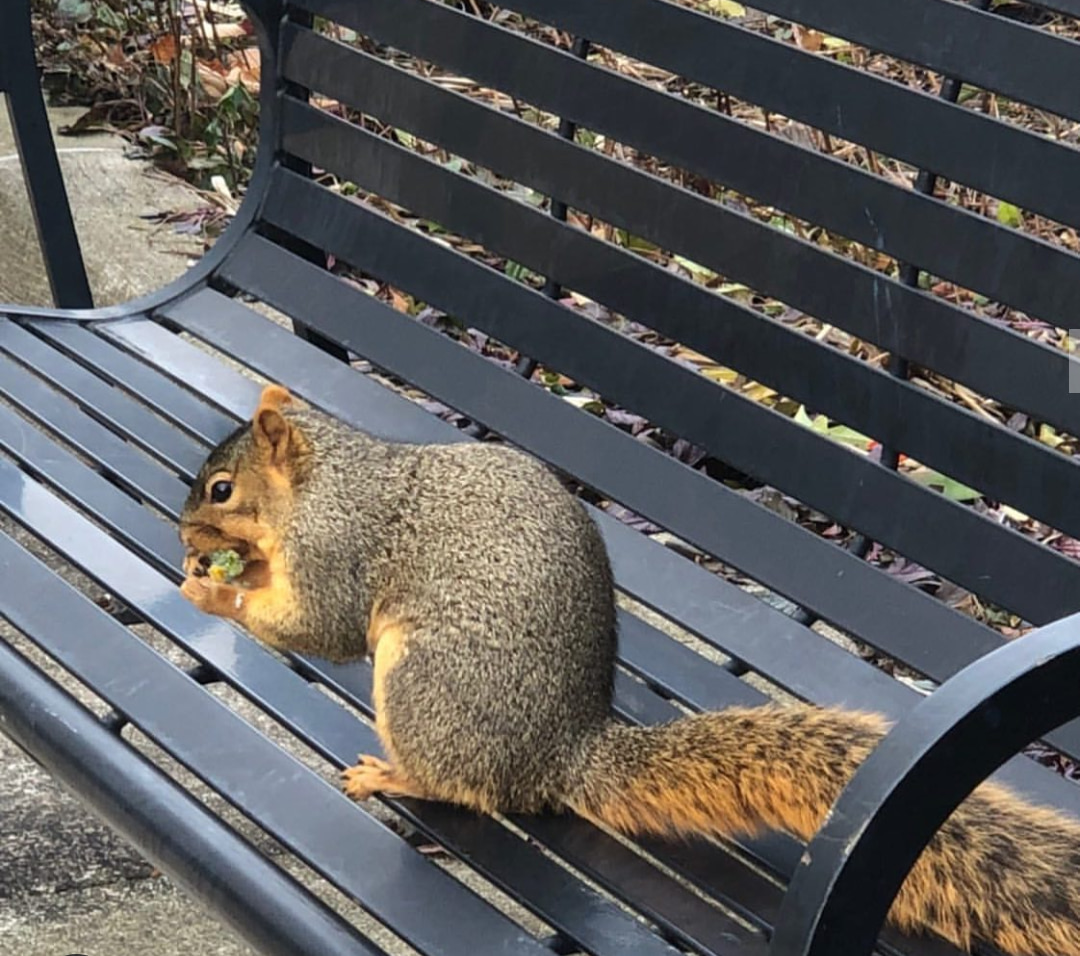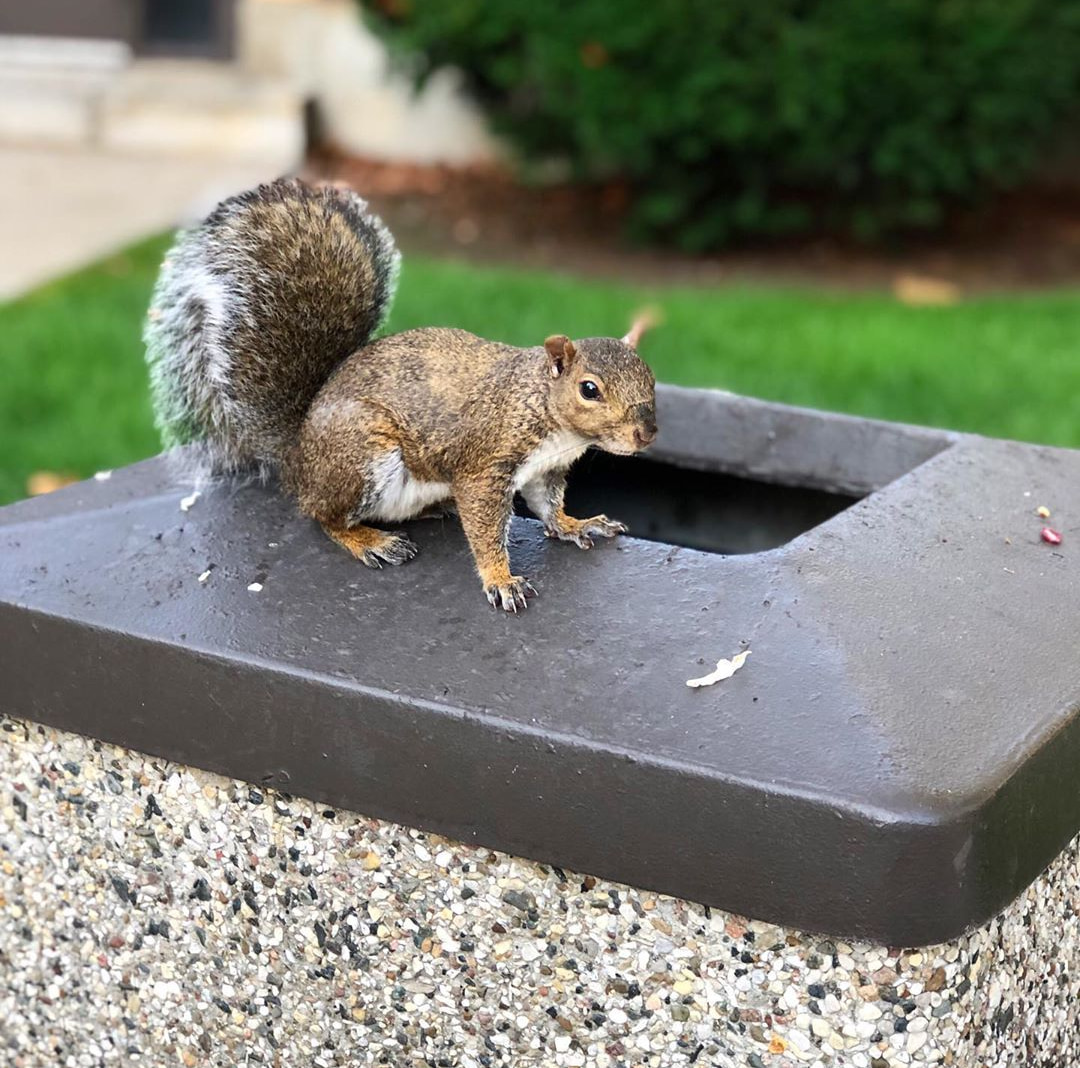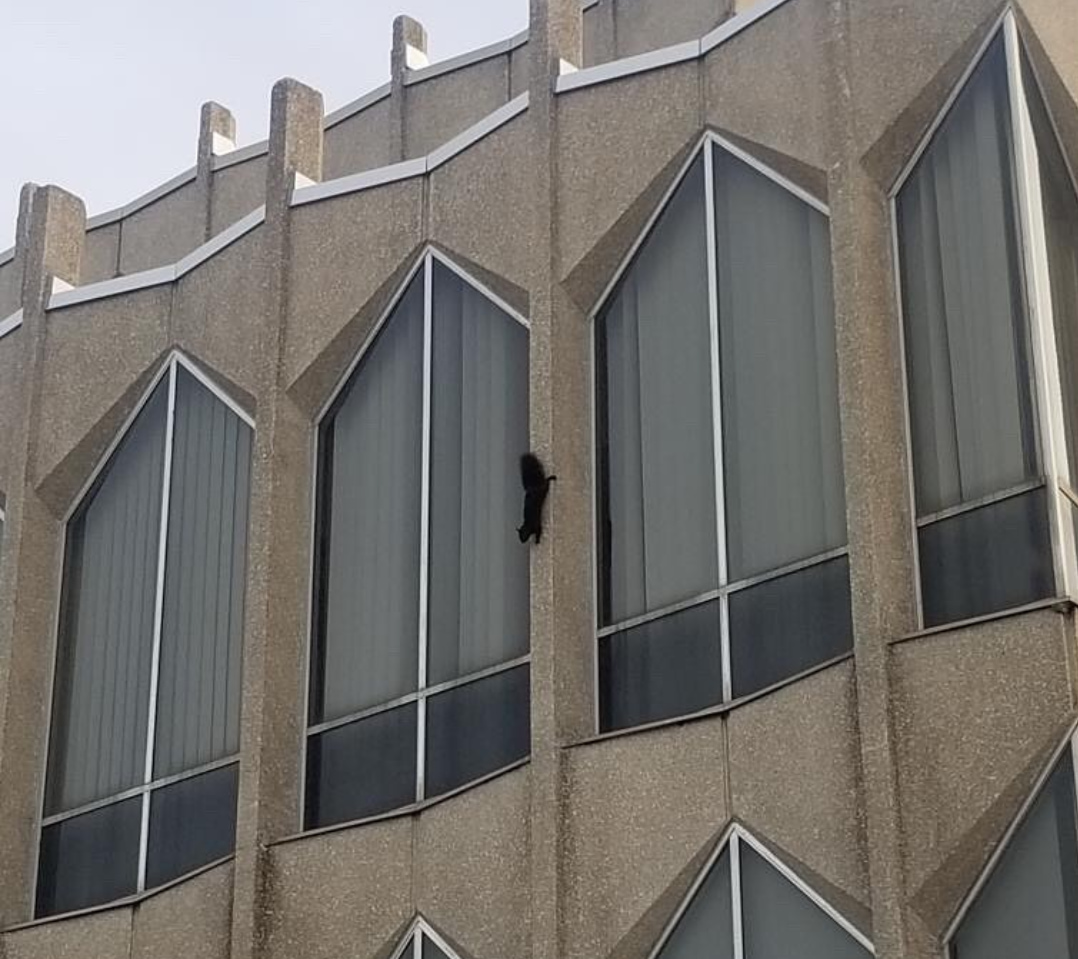Warrior Wildlife: Midtown's squirrelly residents
By Michelle Serreyn, OTL program coordinator and WSU's resident "nature nut"

All year-round, you'll see these creatures furtively running around campus - stopping and starting, looking around crazily; darting in and out of bushes; chasing each other; looking up at you with pleading eyes, begging for food; and dumpster diving. No, they are not lost or desperate freshmen. They're squirrels.
Scurrying sciuruses
There are four types of primarily tree-dwelling squirrels that call Michigan home. By far the most common in our area is the gray squirrel, Sciurus carolinensis. While you may be thinking "but no, I see more black squirrels," those are actually gray squirrels as well, just a color morph of this species. Other color morphs are also possible, such as leucistic (whitish) individuals and true albinos, but these are much rarer.
I'll have that bagel!
Squirrels are rodents, so they have prominent incisors (front teeth) for gnawing and molars for grinding, but lack canine teeth. While primarily herbivores (plant material eaters) who like to feast on nuts and seeds, they'll also steal bird eggs and nestlings, feast on fruit, munch on mushrooms, ingest insects and, yes, scrounge for bagels, pizza, chips and other (not really good for them) people food. This just means they are opportunistic - like any hungry college student, they'll eat what they can get, even if it includes high fructose corn syrup, refined sugar and bleached wheat flour.
Where are my nuts?
And they are oh-so-clever at getting that food. Many avid birders and gardeners have cursed squirrels for raiding their bird feeders, no matter how ingeniously set up, and garden beds, especially when there are yummy things just beginning to ripen. In preparation for hard times, they do bury and cache things like nuts and acorns. They don't remember where they are, but they can smell them, even under a layer of snow.

Who wouldn't want a tail?
Their fur protects them from the worst of the winter cold, and their tail can serve as an extra "coat" or "blanket." The tail can also be a rudder when they leap from tree to tree, a balance beam as they scurry across small branches, and an umbrella in the rain. Wouldn't it be cool to have an appendage like that!!
Stalking squirrels
As snow covers the ground, you may see squirrel tracks. They are usually small, one-inch long for the forefeet and about two inches long for the back feet, with four front toes and five in back. Prints appear a bit bigger than their actual feet, and their claws will usually show as well. When hopping about, their back feet will precede their front feet.
Other winter signs of squirrel activity include chewed nut and acorn husks, and leafy nests or dreys high in the trees. They will use convenient tree cavities for nesting and sleeping, chewing the bark to enlarge the opening if they need to.
Enjoying squirrels at WSU
On-campus, they have few predators, so they can become quite bold, though some still haven't figured out that roads and cars

can be dangerous. It's best not to feed them - they can become habituated to human food and presence, which can lead to some issues such as biting (whether intentional or inadvertent). While they can carry rabies and other diseases, bites from diseased animals are very uncommon.
Soon, you'll be able to enjoy their crazy antics as the mating urge strikes and the males go in hot pursuit of females and chase off all challengers. Spring will bring babies and more chasing games. So have fun watching this highly visible campus resident.
And don't forget to be kind to lost froshes.
Celebrate National Squirrel Appreciation Day, January 21, with a visit to exhibits at Purdy Library (up until the end of the month) and the Subject of the Month page, and by sharing some of your favorite squirrel photos with @wsu.squirrels on Instagram!
And don't forget Groundhog Day, February 2! (They're really just big squirrels!)
Do your bit for science - become a squirrel observer. Log your observations at Project Squirrel.